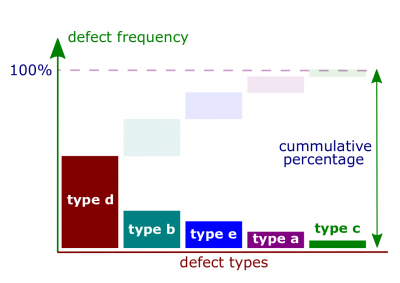Difference between revisions of "Pareto diagram"
| Line 5: | Line 5: | ||
According to [[Managing Quality by Foster (6th edition)]], | According to [[Managing Quality by Foster (6th edition)]], | ||
:[[Pareto chart]]. Chart used to identify and prioritize problems to be solved. | :[[Pareto chart]]. Chart used to identify and prioritize problems to be solved. | ||
| + | According to [[Cost Accounting by Horngren, Datar, Rajan (14th edition)]], | ||
| + | :[[Pareto diagram]]. Chart that indicates how frequently each type of defect occurs, ordered from the most frequent to the least frequent. | ||
==Related lectures== | ==Related lectures== | ||
*[[Controlling Quarter]]. | *[[Controlling Quarter]]. | ||
| − | [[Category: Quality Management]][[Category: Septem Artes Administrativi]][[Category: Articles]] | + | [[Category: Quality Management]][[Category: Septem Artes Administrativi]][[Category: Articles]][[Category: Accounting]] |
Revision as of 20:39, 10 July 2020
Pareto diagram (alternatively known as Pareto chart; hereinafter, the Diagram) is a quality-control tool that represents a histogram, ordered by frequency of occurrence, that shows how many results were generated by each identified cause.
Definitions
According to Managing Quality by Foster (6th edition),
- Pareto chart. Chart used to identify and prioritize problems to be solved.
According to Cost Accounting by Horngren, Datar, Rajan (14th edition),
- Pareto diagram. Chart that indicates how frequently each type of defect occurs, ordered from the most frequent to the least frequent.
